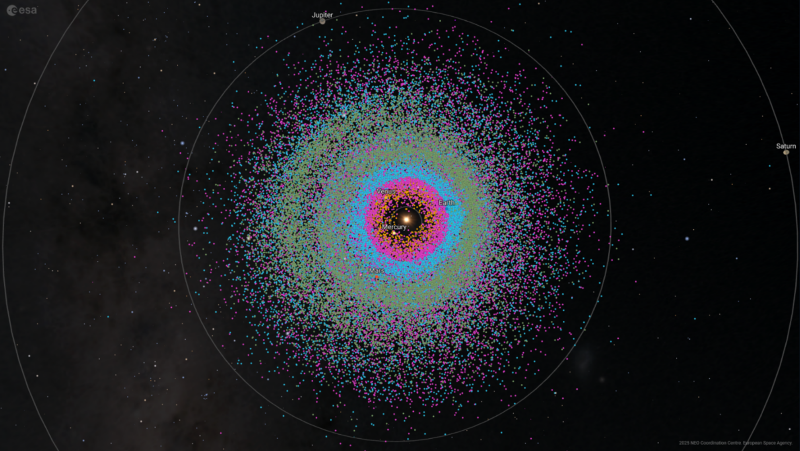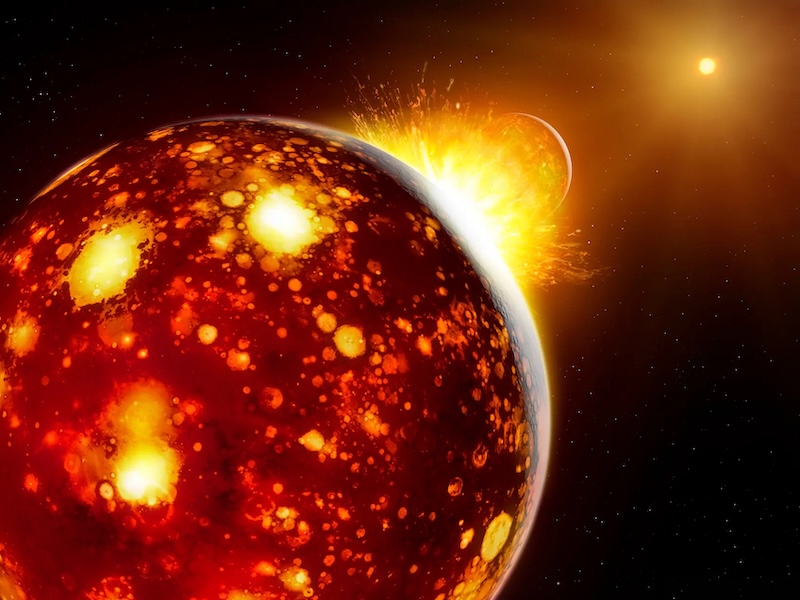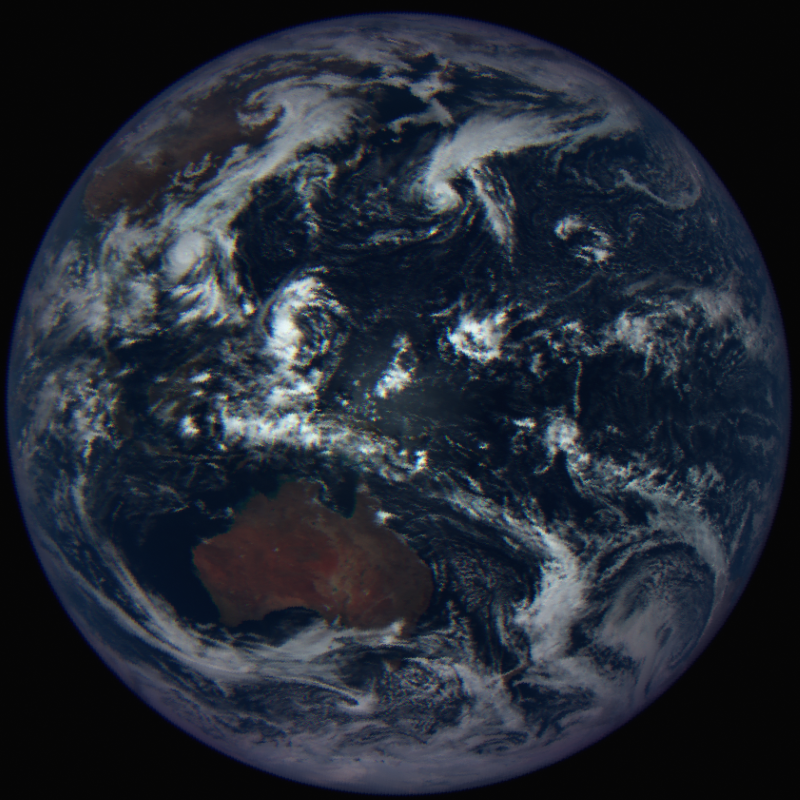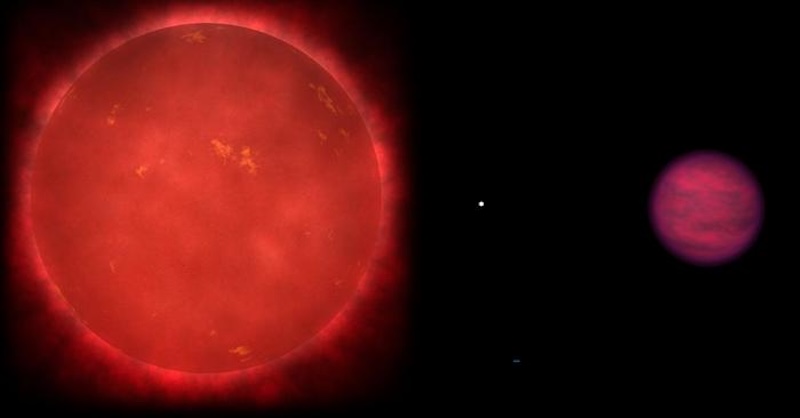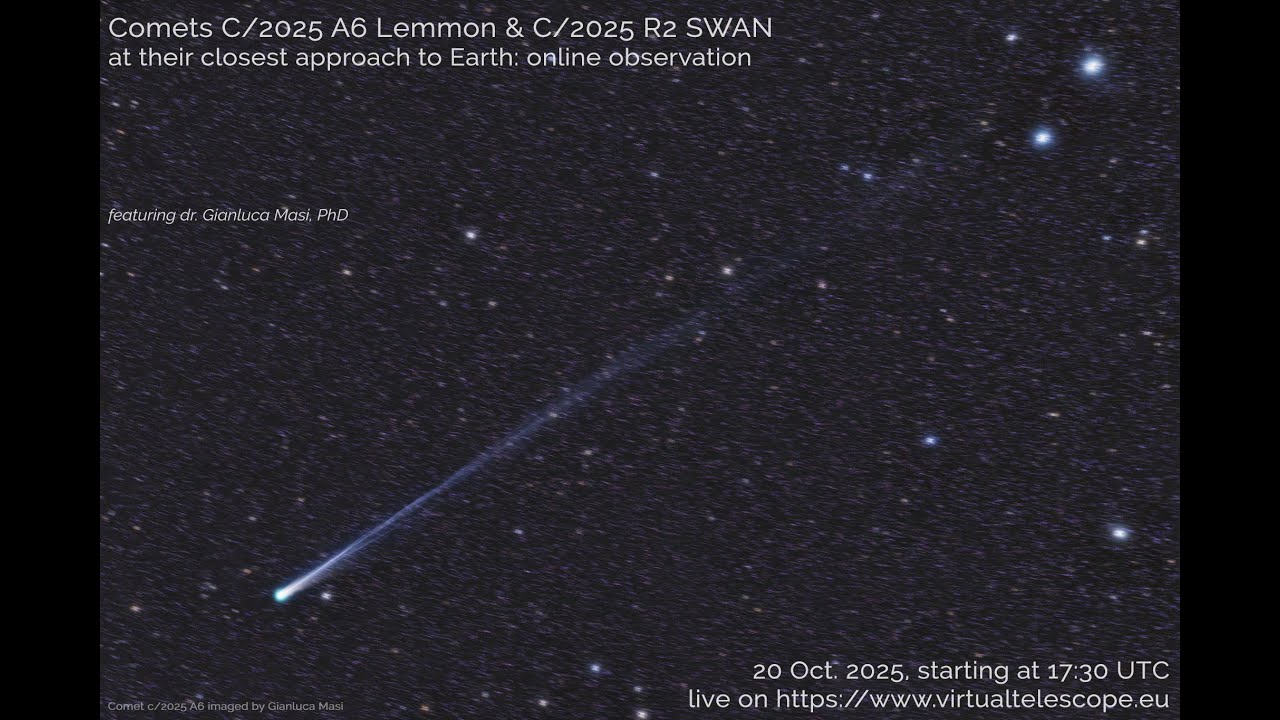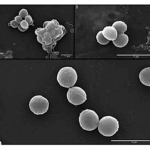Now Reading: Saturn’s rings are weird and wonderful: 10 facts here
-
01
Saturn’s rings are weird and wonderful: 10 facts here
Saturn’s rings are weird and wonderful: 10 facts here
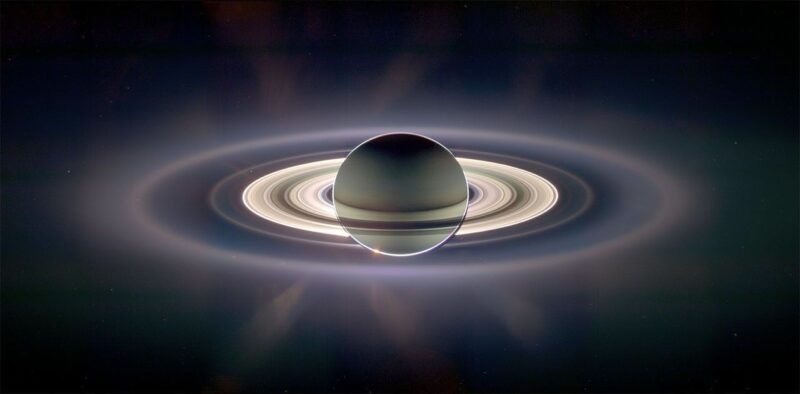
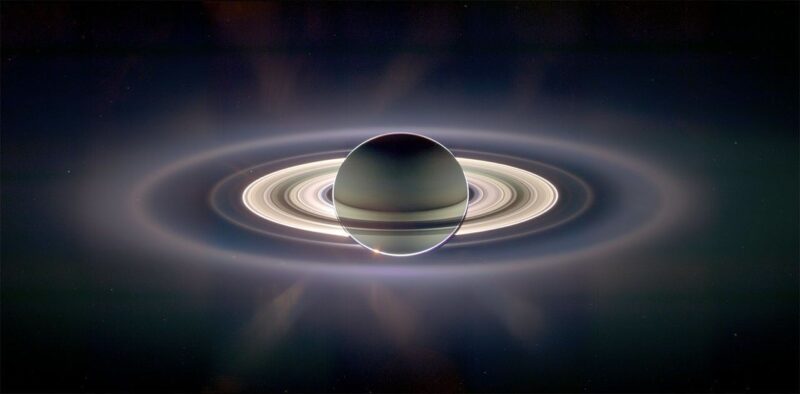
Science matters. Wonder matters. You matter. Join our 2025 Donation Campaign today.
Saturn’s rings are weird and wonderful
Saturn’s rings have given this planet the nickname the jewel of the solar system. At times when small telescopes don’t show the rings – when they’re edgewise to us, as they were for a few weeks last March – Saturn appears as a golden ball, just another distant gas giant world. But the rings make Saturn a showstopper. They draw oohs and aahs through small telescopes. The other gas giants have dim, narrow rings. But Saturn’s rings are bold and beautiful. They’re also weird. Read on to discover 10 weird and wonderful facts about Saturn’s rings.
10 weird facts about the rings of Saturn
1. Saturn’s rings are younger than the oldest dinosaurs. If the earliest dinosaurs, which reigned some 250 million years ago, could manipulate a telescope with their claws, they would have seen a ringless planet. Vahe Peroomian of USC Dornsife College of Letters, Arts and Sciences said:
Saturn’s rings are extremely bright and dust-free, seeming to indicate that they formed anywhere from 10 to 100 million years ago.
2. Saturn’s rings are incredibly thin. The rings may look massive, but that’s only true in one direction. The rings span about 170,000 miles (273,000 kilometers) across. Meanwhile, the rings only average about 30 feet (10 meters) in thickness. Most of the particles that make up the rings are less than 1 meter (yard) in size. So the rings may look solid, but, according to NASA, that’s just an:
… optical illusion on a cosmic scale.
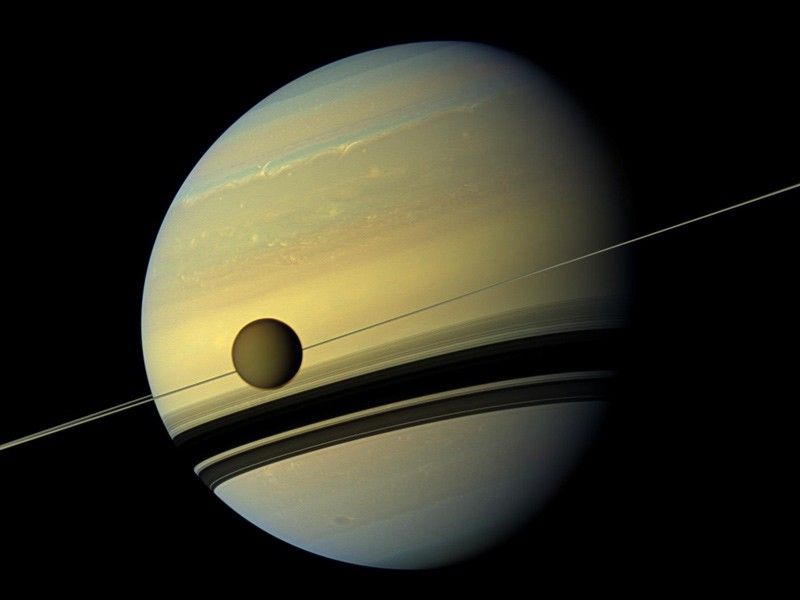
3. Saturn’s rings occasionally disappear. Because the rings are so thin, they can seem to disappear from our perspective. Every 14 years or so, from our point of view on Earth, the rings appear edge-on. March 2025 was the last time the rings appeared edge-on. They’ll appear full again in 2032.
4. But Saturn’s rings really are disappearing. And this time it’s not just a trick of perspective. The rings have not always accompanied the planet, and one day they’ll be gone again. That’s because the particles are raining onto Saturn. Scientists call the phenomenon ring rain. And they estimate that in another 100 to 300 million years they’ll be gone. So Saturn’s rings are only a temporary feature. And we’re lucky to be around to see Saturn’s glorious ring system.
5. Saturn’s E ring is constantly being replenished. Overall, the rings are slowly dissipating through ring rain. But in the meantime, Saturn’s E ring is supplied with a steady stream of material from the moon Enceladus. Enceladus is a fascinating moon that has geysers that shoot icy particles into space. Scientists have even detected organics in those water plumes. The particles shot out by Enceladus drift into orbit and become part of the E ring.
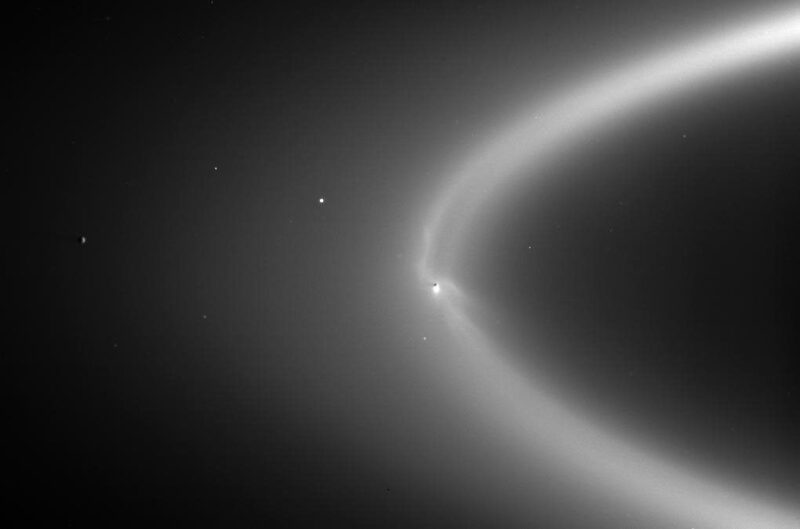
6. Saturn’s rings are kept in place by shepherd moons. Just like sheep-herding dogs keep their flock in line, Saturn has shepherd moons that keep the ring particles in line. Their gravity “shepherds” the ring particles, keeping them from drifting apart. Moons like Prometheus and Pandora help confine the narrow F ring, for example.
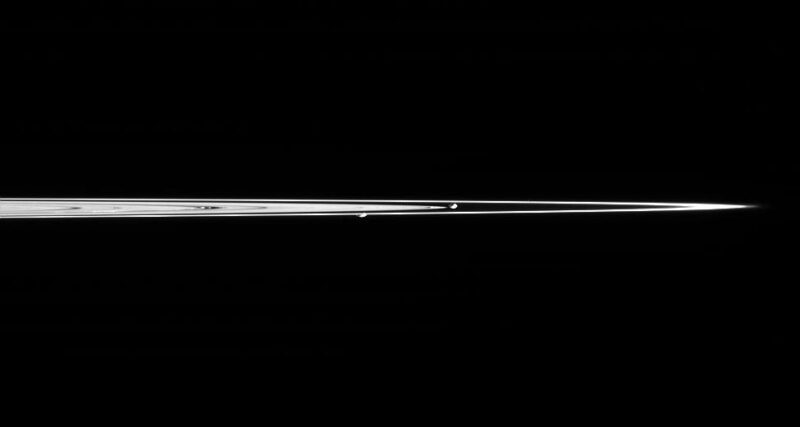
7. The B ring has mysterious spokes. Visiting spacecraft have witnessed mysterious dark spokes on Saturn’s B ring. Voyager saw one that grew over 3,700 miles (6,000 km) in just five minutes. And Cassini saw many spokes, too. Scientists think these spokes are temporary streaks – both dark and bright – made of tiny, icy dust particles. When Saturn’s magnetic field interacts with the solar wind, it can electrically charge and suspend the dust particles, causing them to appear as temporary spokes. They last for a few rotations on the rings before fading away. There’s even a spoke season, when Saturn nears the equinox.
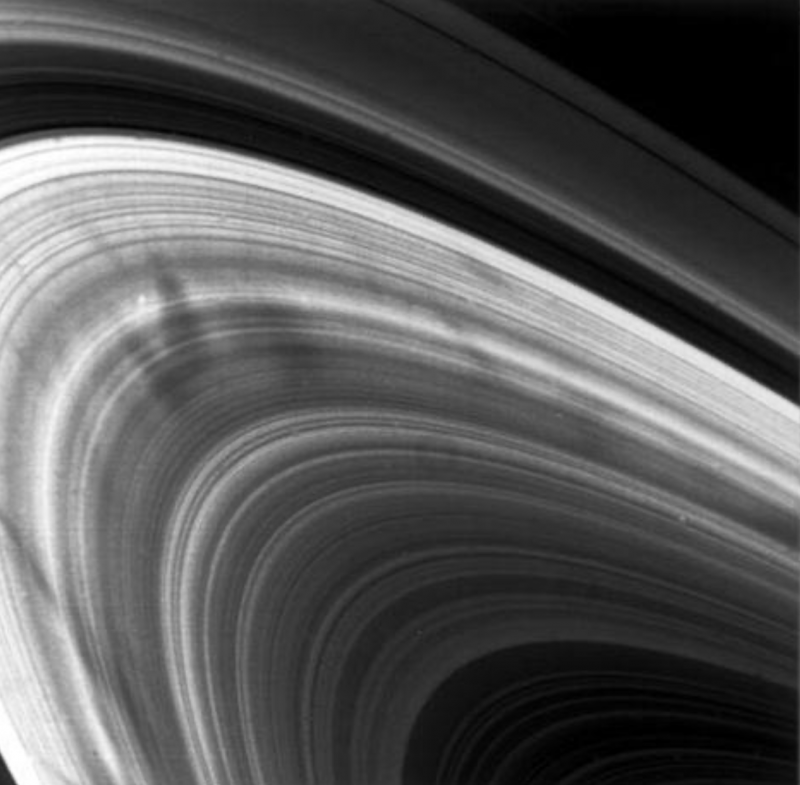
8. The rings are some of the most reflective objects in the solar system. That’s because they’re 99% water ice, so they reflect a lot of sunlight. NASA describes the rings as:
… a blizzard of water-ice particles mixed with dust and rock fragments.
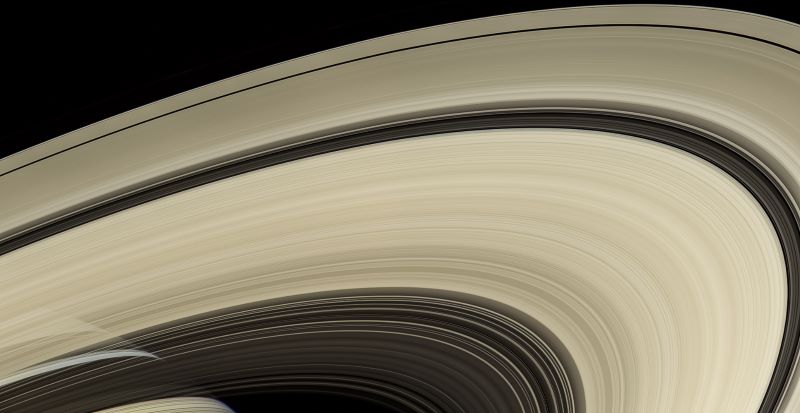
9. The ring particles are moving at a breakneck speed. The serene look of the rings through a telescope is a bit misleading. Those particles of ice and dust are zipping around Saturn at up to 45,000 mph (72,000 km/h). The rings closest to Saturn orbit fastest, just like the closest planet to the sun – Mercury – orbits faster than those farther away.
10. We’re still not sure how Saturn got its rings. One theory suggests that, 160 million years ago, a large moon of Saturn tore apart and became the planet’s rings. Scientists dubbed this lost moon Chrysalis, for its power to transform from a moon into rings, much as an insect chrysalis produces a butterfly. Another theory says the rings are remnants of the material that formed Saturn’s moons. But this material couldn’t coalesce into a moon because it was inside the Roche limit. And yet another theory suggests meteor impacts shattered a moon, which then became the rings.
Bottom line: Saturn’s rings are a glorious highlight of our solar system. But how long have they existed? And what will happen to them? Plus, how were they born?
Read more: Saturn’s rings: Top tips for beginners
The post Saturn’s rings are weird and wonderful: 10 facts here first appeared on EarthSky.
Stay Informed With the Latest & Most Important News
Previous Post
Next Post
-
 012024 in Review: Highlights from NASA in Silicon Valley
012024 in Review: Highlights from NASA in Silicon Valley -
 02Panasonic Leica Summilux DG 15mm f/1.7 ASPH review
02Panasonic Leica Summilux DG 15mm f/1.7 ASPH review -
 03How New NASA, India Earth Satellite NISAR Will See Earth
03How New NASA, India Earth Satellite NISAR Will See Earth -
 04And Thus Begins A New Year For Life On Earth
04And Thus Begins A New Year For Life On Earth -
 05Astronomy Activation Ambassadors: A New Era
05Astronomy Activation Ambassadors: A New Era -
06SpaceX launch surge helps set new global launch record in 2024
-
 07Space Force plans new ‘Futures Command’ amid pressure to speed up modernization
07Space Force plans new ‘Futures Command’ amid pressure to speed up modernization












